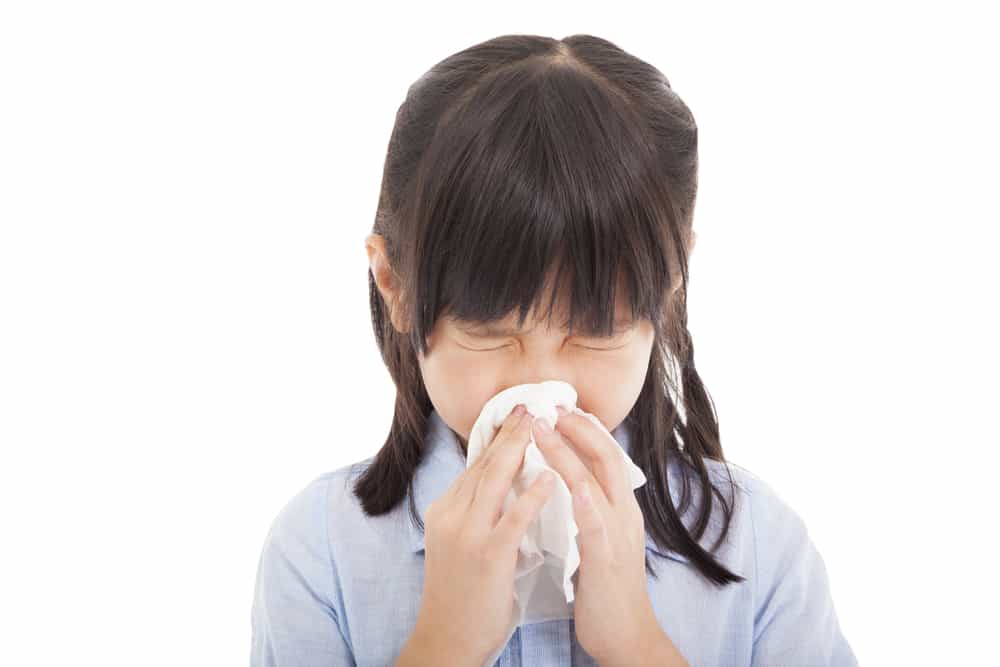What Are the Causes and Symptoms?

Children still have a weak immune system, so they are more susceptible to contracting various diseases, one of which is ISPA (upper respiratory tract infection). ARDs may not be so dangerous, but if left untreated they can cause complications. Therefore, ARI in children must be prevented and treated.
What are the causes of ARI in children?
ARI is a respiratory infection that attacks the upper part, such as the nose, throat, pharynx, larynx, and bronchi. Colds are one of the ARI diseases that often occur in children. Some of the other ARI diseases are sinusitis, laryngitis, pharyngitis, tonsillitis, and epiglottitis.
ARI is caused by viral and bacterial infections.
- Viruses that cause ARI: rhinovirus, adenovirus, coxsackie virus, human metapneumovirus, and parainfluenza virus.
- Bacteria that cause ARI: group A beta-hemolytic streptococci, corynebacterium diphtheriae (diptheria), neisseria gonorrhoeae (gonorrhea), chlamydia pneumoniae (chlamydia), and group C beta-hemolytic streptococci.
Viruses and bacteria that cause ARI in children can infect children by:
- The child is close to someone who is infected with an ARI. When someone with a virus that causes ARI sneezes and coughs without covering their nose and mouth.
- The child is in a closed and crowded room, and there are people who are infected with the ARI virus near the child.
- When a person infected with the virus touches a child’s nose and eyes. The infection can be transmitted when infected fluids come into contact with the nose and eyes.
- The air around the child is very humid. Viruses that cause ARDs love being in a humid environment.
- When the child’s immune system is weak, it is easier for children to contract ARIs
What are the symptoms of ARI that can appear in children?
When viruses or bacteria enter the child’s respiratory tract, the child can develop symptoms of ARI. Symptoms of ARDs that can appear are:
- Nasal congestion or discharge
- Sneezing and coughing
- Excessive production of sputum or phlegm
- Fever
- Headache
- Fatigue and feeling weak
- Pain when swallowing
- Hoarseness, usually when the child has laryngitis
What can be done to relieve symptoms of ARI in children?
When a child has an ARI, of course the child’s condition is weak and uncomfortable. As a parent, you can do the things below to relieve the child’s condition.
- Let the child get enough sleep
- Give the child plenty to drink
- Help the child to blow his nose
- Relieve sore throat of children by asking him to gargle with warm salt water
- Apply it petroleum jelly on the outside of the child’s nose to reduce irritation due to air entering and leaving the nose when the child breathes
- Keep the humidity in the room in the house so that the child breathes easier
- Keep children away from cigarette smoke
If the child’s condition has not improved, you can give the child medication that does not require a prescription or take the child to the doctor.
Hello Health Group and Hello Sehat do not provide medical advice, diagnosis or treatment. Please check our editorial policy page for more detailed information.
NHS. (2015). Respiratory tract infections. [online] Nhs.uk. Available at: http://www.nhs.uk/conditions/Respiratory-tract-infection/Pages/Introduction.aspx [Accessed 17 Feb. 2017].
Healthline. Acute Upper Respiratory Infection. [online] Healthline. Available at: http://www.healthline.com/health/acute-upper-respiratory-infection#Treatment7 [Accessed 17 Feb. 2017].
Upper Respiratory Infection In Children – What You Need to Know. [online] Drugs.com. Available at: https://www.drugs.com/cg/upper-respiratory-infection-in-children.html [Accessed 17 Feb. 2017].